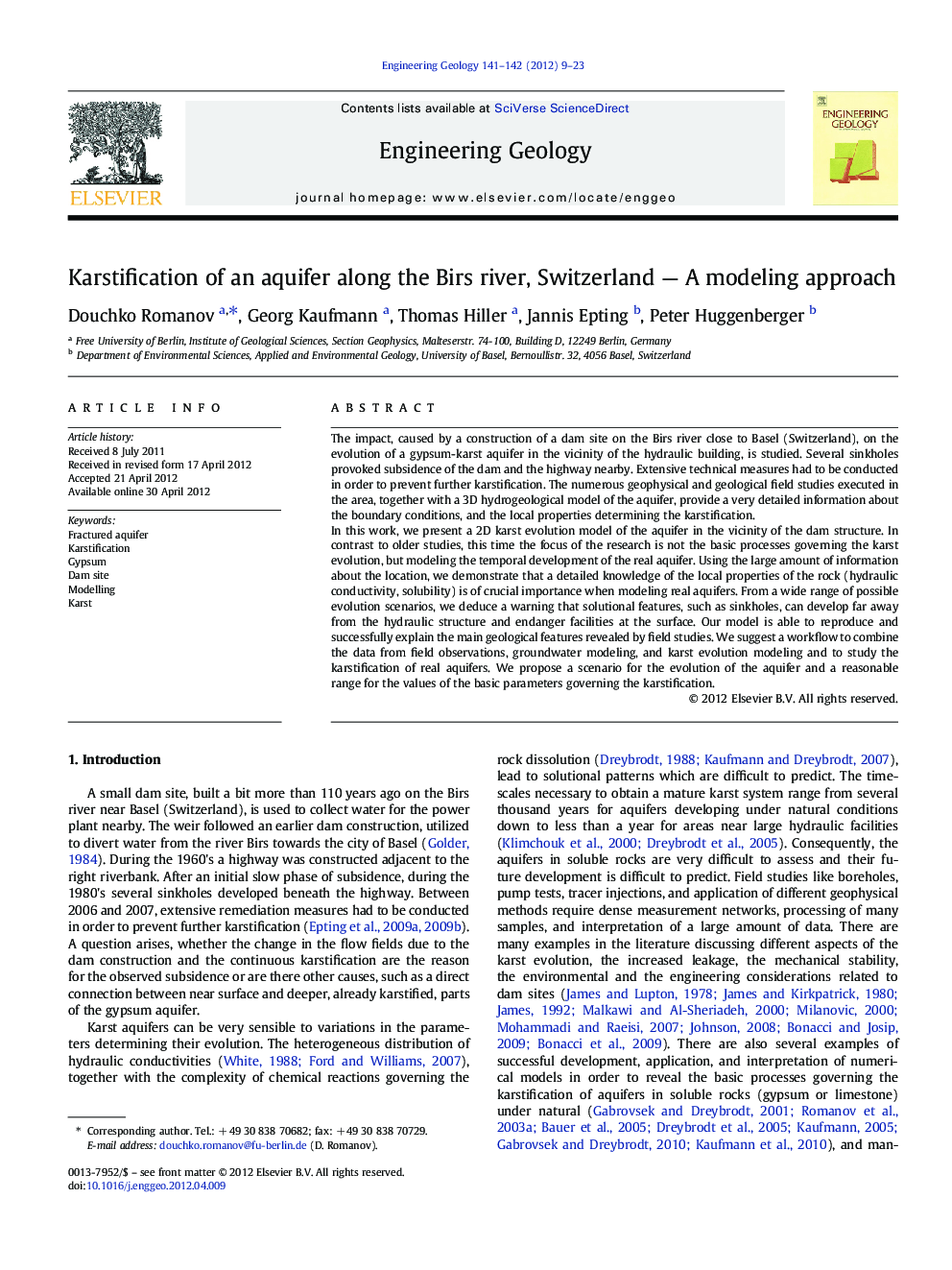| Article ID | Journal | Published Year | Pages | File Type |
|---|---|---|---|---|
| 4743945 | Engineering Geology | 2012 | 15 Pages |
The impact, caused by a construction of a dam site on the Birs river close to Basel (Switzerland), on the evolution of a gypsum-karst aquifer in the vicinity of the hydraulic building, is studied. Several sinkholes provoked subsidence of the dam and the highway nearby. Extensive technical measures had to be conducted in order to prevent further karstification. The numerous geophysical and geological field studies executed in the area, together with a 3D hydrogeological model of the aquifer, provide a very detailed information about the boundary conditions, and the local properties determining the karstification.In this work, we present a 2D karst evolution model of the aquifer in the vicinity of the dam structure. In contrast to older studies, this time the focus of the research is not the basic processes governing the karst evolution, but modeling the temporal development of the real aquifer. Using the large amount of information about the location, we demonstrate that a detailed knowledge of the local properties of the rock (hydraulic conductivity, solubility) is of crucial importance when modeling real aquifers. From a wide range of possible evolution scenarios, we deduce a warning that solutional features, such as sinkholes, can develop far away from the hydraulic structure and endanger facilities at the surface. Our model is able to reproduce and successfully explain the main geological features revealed by field studies. We suggest a workflow to combine the data from field observations, groundwater modeling, and karst evolution modeling and to study the karstification of real aquifers. We propose a scenario for the evolution of the aquifer and a reasonable range for the values of the basic parameters governing the karstification.
► A karst evolution model of a real aquifer is presented. ► Field and groundwater modelling data is successfully integrated. ► Values for the basic parameters describing the aquifer, are determined. ► A workflow for modelling real karst aquifers is proposed.
